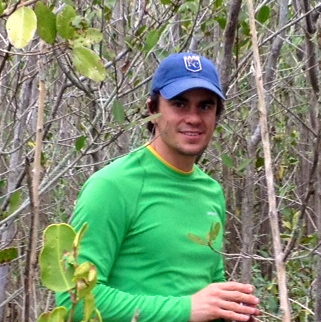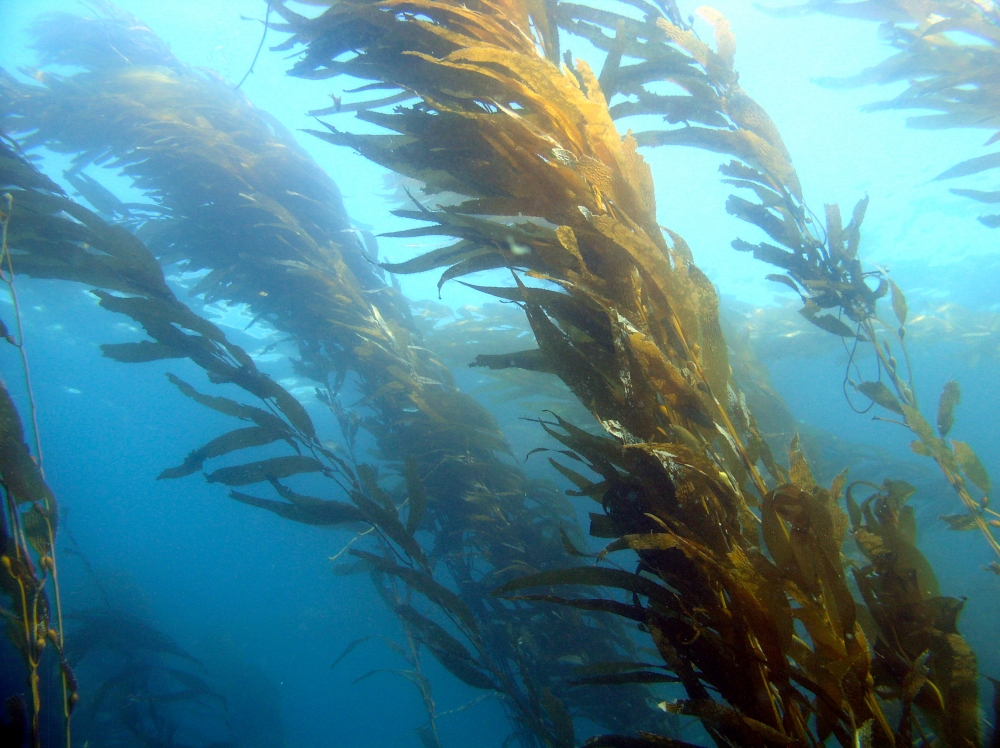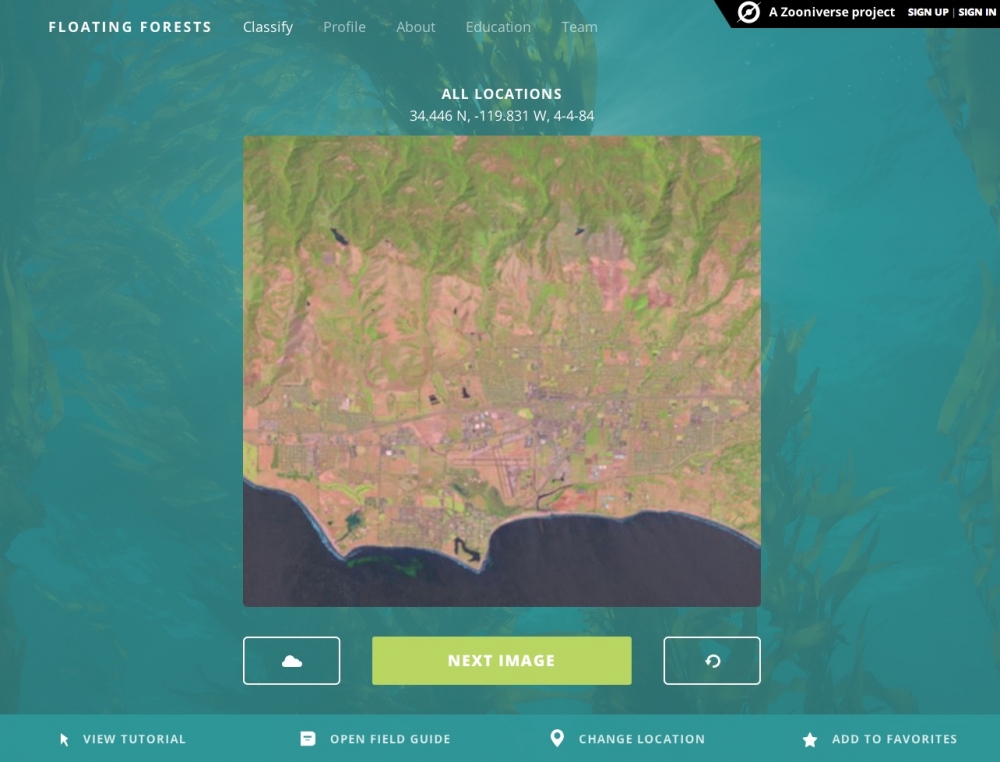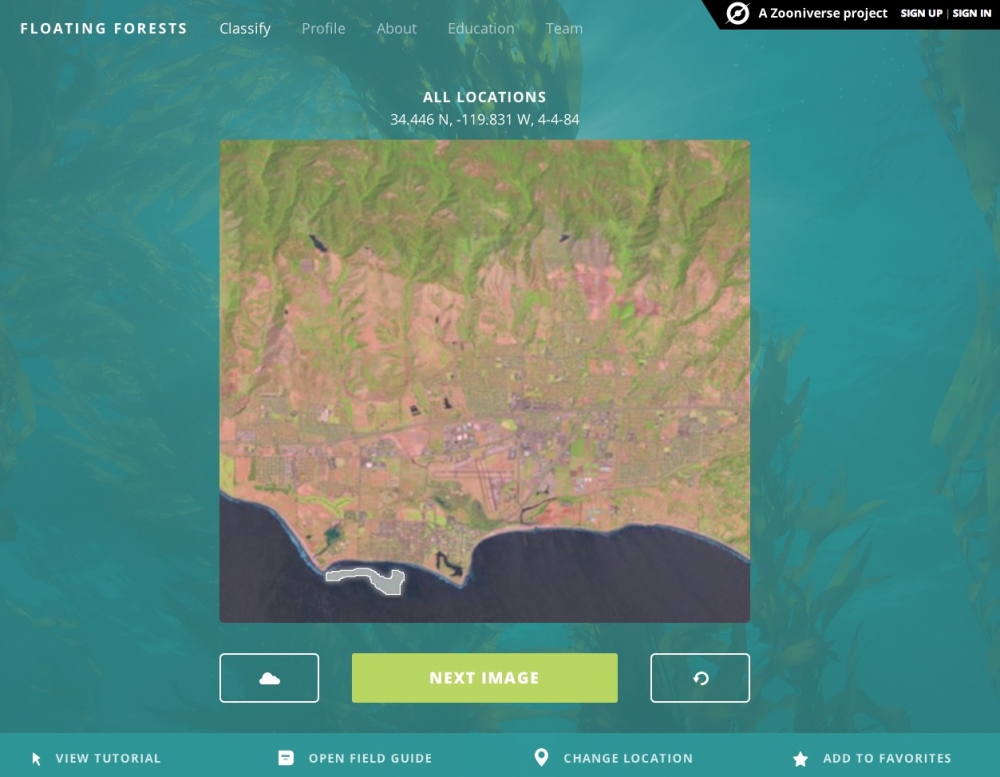Tracking Giant Kelp From Space


Citizen scientists worldwide are invited to take part in marine ecology research, and they won’t have to get their feet wet to do it. The Floating Forests project, an initiative spearheaded by scientists at UC Santa Barbara and UCLA, is calling on would-be researchers to examine 30 years of satellite photographs of coastal kelp-dominated areas around the globe to help identify their various sizes and locations.
In collaboration with colleagues at UC Santa Barbara, Jarrett Byrnes, a former postdoctoral scholar at the campus’s National Center for Ecological Analysis and Synthesis (NCEAS), is trying to determine whether and how climate change is impacting giant kelp forests. To accomplish this, he needs to identify the green patches of kelp forest that appear in photos taken from space. Because of the sheer number of images — 100,000 in all —Byrnes and his team are soliciting assistance from the general public.
In the satellite photos, taken between 1983 and 2013, giant kelp forests appear as little green blobs in a big blue ocean. “What people are actually seeing is the kelp forest canopy floating on the surface of the water,” Byrnes said. “Computers have trouble distinguishing between sea foam and kelp forest, but to the human eye, it’s easy to see the difference.”
As a result, Byrnes and UCSB alumnus Kyle Cavanaugh, an assistant professor in UCLA’s Department of Geography, developed Floating Forests for exactly this purpose. The project will launch Aug. 7, with participants focusing on approximately 10,000 images from California and Tasmania. Once these images are classified, additional sets from other locations will be added.
Identifying the kelp forests is simple: Click to get a new photo, circle the kelp and submit the result to the research team. Floating Forests was created in collaboration with Zooniverse, a citizen science Web portal owned and operated by the Citizen Science Alliance (CSA). Projects supported by CSA have involved tracking wildlife on a preserve and counting galaxies.
Giant kelp, which requires colder water to thrive, provides habitat for otters, fish, urchins and crustaceans. “Giant kelp is an incredible species,” Byrnes said. “It can grow up to a foot or two a day and forms these huge, beautiful redwood-like forests. If a forest is just recovering from a storm, swimming through it is like trekking through thick dense jungle.”
The NASA Landsat images that Byrnes and Cavanaugh have collected of kelp canopies floating on the ocean’s surface could tell scientists a lot about how kelp forests have fared through the past three decades of climate change.
“Our first effort will be an examination of changes in global area coverage of the giant kelp canopy,” explained Byrnes, now an assistant professor of biology at the University of Massachusetts Boston and former principal investigator of an NCEAS working group called Global Impacts of Climate Change on Kelp Forest Ecosystems. With the kelp forest in the images isolated, Byrnes and his colleagues will analyze the results to help estimate how much total carbon over time across the globe is locked up in giant kelp.
Visitors to the Floating Forests website will see thousands of images from giant kelp forests in Chile, South Africa and other coastlines around the world. The researchers said they hope the project will help regular people engage with marine ecology and issues around climate change.






